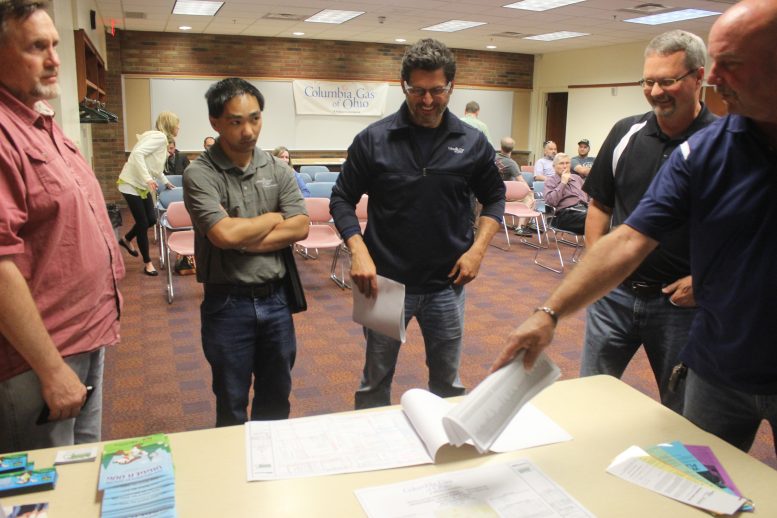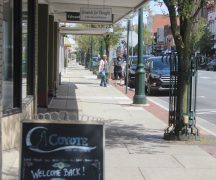By DAVID DUPONT
BG Independent News
Columbia Gas officials gave assurances Monday night that the installation of new gas lines in downtown Bowling Green would not interfere with the summer fun.
The $1.3 million project to lay 7,500 feet of plastic pipe is scheduled to begin June 4, and continue until early September. It will extend down Main Street from Clay down to Lehman and Ordway. The existing metal pipes will be replaced by plastic pipes. The project is part of an ongoing effort by Columbia Gas to upgrade its service.
The gas service will go from about a quarter pound of pressure to 50 pounds of pressure.
“That gives us not only a safer pressure to keep water out of the lines, it allows for homeowners and residents to use more gas appliances,” said Raquel Colon, an external affairs specialist for Columbia Gas. “You’ll have more capacity to have more gas come into your home.”
This will include generators for businesses, said Jim Simon, project leader for Columbia Gas.
“This project will be a lot of open cut, there’ll be a lot digging, not boring as we’ve done in the past,” Colon said. “What we’re doing is a lot of digging, and it will be a little dirty but the goal is a much safer distribution of gas.”
Alex Hann, who is site and logistics chair for the Black Swamp Arts Festival as well as being active in other downtown events, asked about what provisions would be made for the five events already planned.
On the downtown calendar are the new Firefly Nights on the third Fridays of June, July, and August, the Classics on Main car show on July 7, and the weekend long Black Swamp Arts Festival, Sept. 7-9 as well as the weekly farmers market. Representatives for all the events were in attendance.
Simon said he was aware and sympathetic to the concerns. He lives in Bowling Green and attends the arts festival. “Our goal is to make it as safe as possible.”
Hann said he was concerned about tripping hazards as well as conditions that make the area less accessible for those in wheelchairs or with limited mobility.
Simon said that unlike in the past where the company has completed large sections of project before going back to do restoration, for the BG work they will do either permanent or temporary restoration as they go along. The idea is to leave things as they were before the work.
The project is being coordinated with the city which has a downtown streetscape project planned to start in fall. Columbia Gas will patch some areas up, but try to minimize how much will then be ripped out for the city’s project.
The gas line improvement extends further south and north than the city plans to go, so those areas will be fully restored.
Workers have already been out marking where underground utilities are with color-coded flags and spray paint. “The flags are an indication of what’s under the ground,” Colon said. “The flags are there so we know what’s there.” The markings, however, do not signify where crews will be digging.
She advised home owners who have underground sprinkler systems or invisible fences to let the company know to avoid damage.
The service representatives will then reach out to property owners and residents to gain access to property to upgrade the service to the building and move the meter.
While in residential properties meters have been moved outside, that’s not possible in the Main Street business district. Where businesses now have meter out back those will be used, but Columbia gas will run pipes into inside meters.
Colon said the crews “will do our best” to work with business proprietors to disrupt operations as little as possible.
Crews always try to keep at least one-lane of traffic open. On street parking will be limited.
The work also will involve regulators installed outside buildings. Also shutoff valves will be in place where the service lines hooks into the main line. The lines will also have tracing technology that will make them easier to find, Colon said.
The project is being funded by a fee charged to all Ohio customers and that goes into a fund to pay for system upgrades. There will be no additional expense to customers. Colon said the company has 50-80 projects underway each year.





